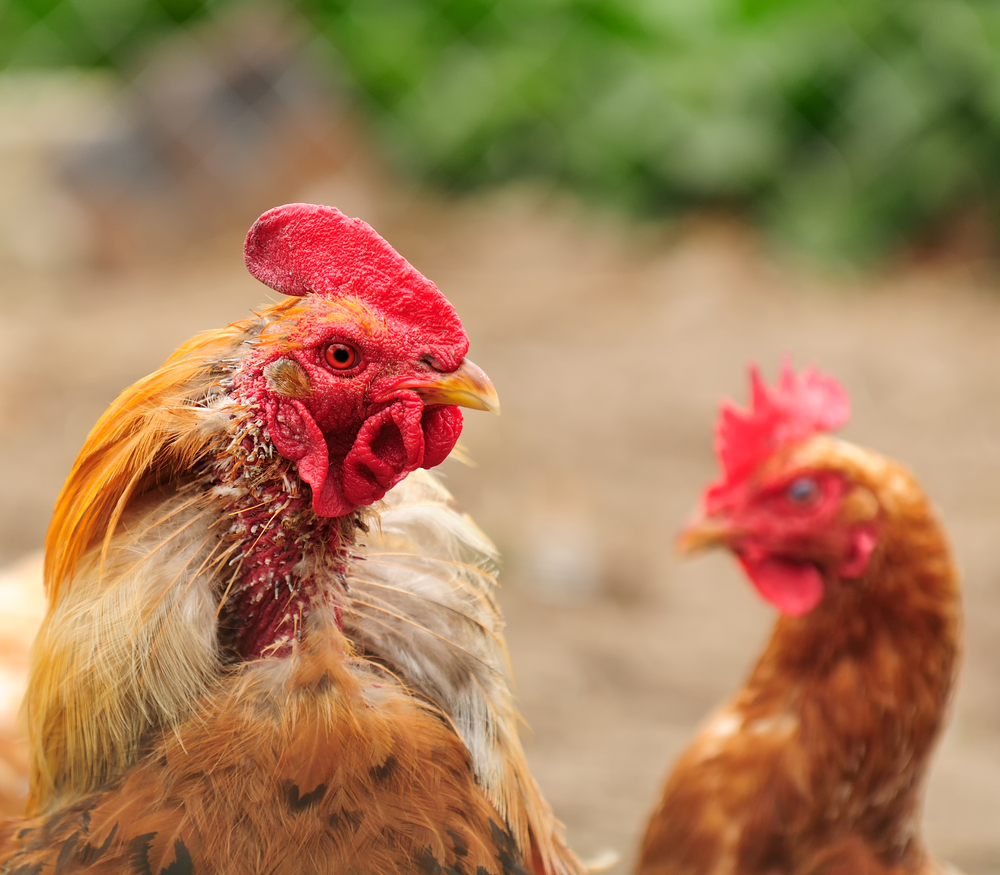 A
farmer doesn’t raise chicken breasts or chicken legs, she or he raises
whole chickens. So when demand for one part is much higher than the
others, this creates a supply problem. This is why so many small
farmers prefer to sell whole chickens (or half a hog or a side of
beef). Processing is also cheaper for whole chickens, and this savings
is usually passed on to the customer. I’m sure you’ve noticed that whole
chicken is cheaper per pound than just breasts or thighs. So, if you
can find a use for all the parts, it's a more affordable way to purchase
your meat.
A
farmer doesn’t raise chicken breasts or chicken legs, she or he raises
whole chickens. So when demand for one part is much higher than the
others, this creates a supply problem. This is why so many small
farmers prefer to sell whole chickens (or half a hog or a side of
beef). Processing is also cheaper for whole chickens, and this savings
is usually passed on to the customer. I’m sure you’ve noticed that whole
chicken is cheaper per pound than just breasts or thighs. So, if you
can find a use for all the parts, it's a more affordable way to purchase
your meat.
But what to do with a whole chicken? For anyone trying to cook more
at home and learn more about whole foods eating, an entire chicken is a
welcome problem. Cook the whole bird, and you end up with plenty of
leftovers to go into other meals. Plus, a great bonus is the chance to
make stock from the carcass. It’s not just an old wives tale that
chicken broth is a cure-all. Broth supplies minerals including calcium,
magnesium and potassium as easily-assimilable electrolytes, and gelatin
which aids in digestion, besides being helpful for a number of other
ailments.
When buying a whole, pasture-raised chicken, there is sometimes a bit
of sticker shock. But we suggest you consider a shift in thinking.
Think how many meals you can get out of your purchase. And consider how
our planet would be better off if we considered meat more of a luxury
item. Perhaps you don’t need to eat as much, and can accept quality over
quantity. The cheap chicken we’re used to is also “one of the great
myths of our modern industrialized food system” according to Shannon
Hayes, farmer and author of several cookbooks on pastured meat. In
Long Way on a Little,
she writes: “Chicken is very expensive to produce. In fact, it is the
most expensive meat we raise on the farm. Grocery store chicken only
looks cheap because you’ve already paid for it in your tax bill.
Through the farm bill, U.S. taxpayers pay approximately $20 billion per
year in direct payments to farmers, over one-third of which goes for the
production of feed grain. Much of this subsidy is paid out to
vertically-integrated industrialized meat production companies who, as a
result, are able to feed their livestock grain for less than the price
of growing it. Small-scale farmers are generally not in a position to
vertically integrate, and therefore cannot gain the same advantage from
these grain subsidies.”
She explains how chicken is more expensive to raise than cattle or
sheep because they are more labor-intensive to care for and to process.
Cheap chicken is a relatively new phenomenon. Yet, farmers are
compelled to sell it cheaply to hang on to their customers: “We wince
every time a customer bristles at paying $20-$25 for a single chicken,
knowing the cost to us in terms of time and labor was even greater than
that final price.”
To further distort the public’s perception of cheap chicken, the vast
majority of chickens raised today are Cornish Cross, which are bred for
efficient meat production and not much else. These birds are
programmed to be ready for slaughter at 6-8 weeks of age. This compares
with traditional breeds that aren’t mature until 12-16 weeks. Growers
are forced into growing this breed, then, if they want to compete in the
marketplace, since any other breed would cost up to twice as much to
raise in terms of labor and feed costs.
So think out of the boneless, skinless chicken breast box, try a
whole or half chicken, help a small farmer, and get a few delicious
meals in the process!
Sources:
Nourishing Traditions, Sally Fallon
Long Way on a Little, Shannon Hayes
 A
farmer doesn’t raise chicken breasts or chicken legs, she or he raises
whole chickens. So when demand for one part is much higher than the
others, this creates a supply problem. This is why so many small
farmers prefer to sell whole chickens (or half a hog or a side of
beef). Processing is also cheaper for whole chickens, and this savings
is usually passed on to the customer. I’m sure you’ve noticed that whole
chicken is cheaper per pound than just breasts or thighs. So, if you
can find a use for all the parts, it's a more affordable way to purchase
your meat.
A
farmer doesn’t raise chicken breasts or chicken legs, she or he raises
whole chickens. So when demand for one part is much higher than the
others, this creates a supply problem. This is why so many small
farmers prefer to sell whole chickens (or half a hog or a side of
beef). Processing is also cheaper for whole chickens, and this savings
is usually passed on to the customer. I’m sure you’ve noticed that whole
chicken is cheaper per pound than just breasts or thighs. So, if you
can find a use for all the parts, it's a more affordable way to purchase
your meat.

